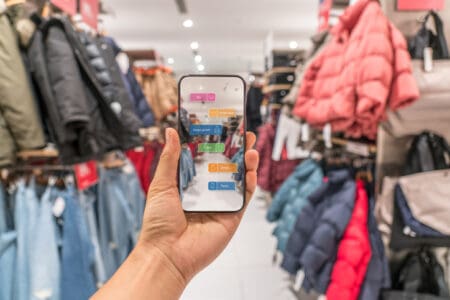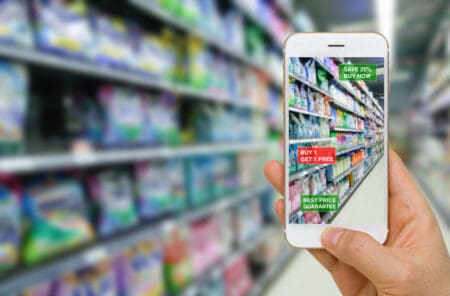The scary and exciting concept of the future may already seem to be dawning on us, with AI suddenly accessible and able to think for us and VR worlds that are becoming more sophisticated and convincing. The entire fabric of society will be affected by the rapidly changing technology we’ve seen in a relatively short time frame, and retail is no exception. Streamlining the customer experience is paramount to the future survival of retail and technological innovation is exactly what is needed to achieve that.
Artificial Intelligence Revolutionising Retail
AI, artificial intelligence, is the largest area of change in how a customer interacts with retail brands. AI enables quick, round-the-clock access to information without the well-known limitations of previous chatbot iterations. AI facilitates convenience and convenience is key in today’s retail environment, the brands that can keep that as their cornerstone will thrive. Already retailers have begun to utilise large AI language models, like ChatGPT, to allow users to ask highly specific questions. In 2023, Zalando launched a new virtual shopping assistant that can provide curated shopping suggestions to customers, like what styles work best for certain weather conditions. The implementation of these AI capabilities across online retail will undoubtedly lead to more enjoyable and more efficient purchase journeys across the board, the downside is that in the long term, it is unlikely that brick-and-mortar retail will be able to keep up the pace.
Augmented Reality will Keep In-Store Retail Afloat
In-store retail, on the other hand, is carving out its unique space by promising tailored experiences to customers. Immersing shoppers in a multi-faceted experience that transcends mere fashion or beauty product shopping is already becoming a popular means of retaining in-store shoppers. But the future will bring a more sophisticated edge to this emerging technology?
Currently, augmented reality (AR) is being tested for this purpose but there aren’t many successful use cases of it. It does present some exciting opportunities to make in-store shopping more comfortable and accessible for all though, which could involve live language translations and live captions for shoppers with hearing loss. There is also interest in some sales-centered applications of AR, such as AR fitting room mirrors and furniture visualisations. We found in our VR and AR report that people are more open to the idea of lightweight and stylish glasses to experience AR rather than through an app or unwieldy headset. Our five-year outlook for VR and AR predicts that this technology will be pivotal to retail as people will be most interested in trying it outside the home so as not to commit to the expense of owning a headset or pair of AR glasses.
Augmented reality isn’t the only way in-store experiences will develop and improve. As previously mentioned, streamlining the in-store purchase journey is more important than ever to maintain customer loyalty in the retail sector. Already, Mintel is seeing much innovation in this area, like Uniqlo’s T-shirt design station in Covent Garden, which presents a fun and distinctive way to engage with the store. Additionally, Nike has strategically prioritised accessible product information in Manchester with RFID-powered tables. Shoppers can place shoes on these tables, instantly accessing comprehensive product information.
Product Transparency and In-Store Recycling
Accessibility to product information will be expected in the retail landscape of tomorrow, especially concerning sustainability. Scannable QR codes on product labels are emerging as an effective solution, providing quick access to information spanning the entire product lifecycle. This includes details about the manufacturing process, environmental impact, and proper disposal instructions. Embracing such advancements not only satisfies consumer demands but also positions retailers at the forefront of a more informed and conscientious shopping experience.
As well as transparency, consumers want retailers to make their sustainability efforts easier for them. We’re already seeing lots of in-store recycling initiatives from retailers, such as H&M and TK Maxx. However, textile recycling is difficult and it will take an intervention from the UK government to make the process more accessible and to hold retailers accountable. Retailers that are already offering recycling in-store will have gained an element of trust from their customer base but the fact is that for many of these retailers, the recycling process is unclear and whether the clothing actually avoids landfill is often unknown. Looking ahead, retailers must learn from and adopt successful models such as Cos, which stands out by assuring the legitimacy of its recycling process. Cos not only satisfies consumer expectations but sets a standard for the industry, emphasising the need for transparent and verifiable sustainability practices.
Looking Ahead with Mintel
Align with the latest trends in consumer behaviour by exploring our extensive Retail Market Research today.
Subscribe to our newsletter, Spotlight, to get free content and insights delivered directly to your inbox.









































